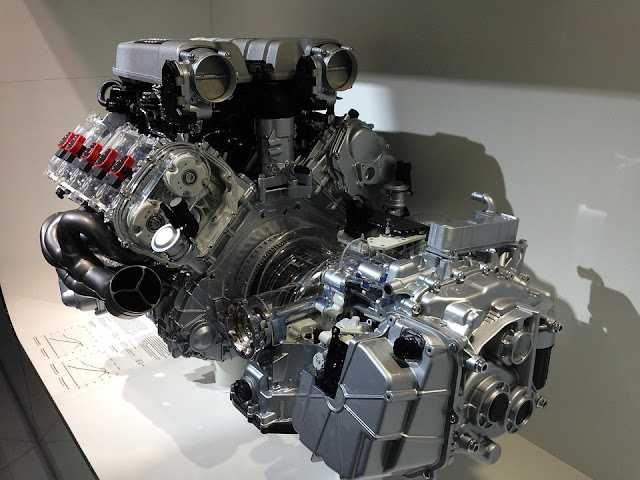A fuel pump is an important component in an automobile's fuel delivery system. In most of the vehicles, we find engine located at the front-end of the vehicle and the fuel tank at the other end. The main function of a fuel pump is to draw the fuel from the storage tank and force it to the engine.
Though some old designs do not require a fuel pump, for many of the latest non-gravity based engines it is an essential component and is often termed as 'the heart of the vehicle'. Below discussed are the two basic types and the advantages of one over the other.
Read Also:- Tips for maintaining the Fuel Pump!
Types of fuel pumps
•Mechanical: Basically there are two types of mechanical pumps - old-style mechanical pumps and the new style GDI pumps.
1.Old style mechanical- They can be found in old model engines that have carburetors. The pump draws fuel from the tank and pushes it to the carburetor when the engine is operating. Their output pressure is quite low - 4 to 10 psi. These low-pressure pumps are mounted on the top of the engine.
2.New style high-pressure GDI pumps- The advent of Gasoline Direct Injection (GDI) systems which can deliver fuel at high pressures has given rise to the high-pressure fuel pumps driven by the camshaft. These high-pressure pumps can generate fuel pressure up to 2,000 psi and higher, which help the GDI engines to achieve improved fuel economy with high power output and reduced emissions.
•Electrical: Electrical fuel pumps are employed in fuel injection systems (introduced prior to GDI system) to pump the fuel from the fuel tank to the injectors. They deliver fuel at 30-85 psi to the fuel injector, which then opens and sprays the pressurized fuel into the engine. Unlike old mechanical, an electrical fuel pump is typically located in or near the fuel tank.
Nowadays, a variety of electrical fuel pumps meant for various applications are available in the market, such as:
• Roller vane pumps
• Turbine pumps
• Gerotor pump
• Solenoid pumps
• Peripheral pumps
• Brushless pumps
Advantages of electric over mechanical fuel pumps-
Smaller and lighter: Compared to the old style low-pressure mechanical fuel pumps, electrical ones are light in weight and small in size. This compact size allows them to easily accommodate inside the fuel tank. Moreover, usage of small devices reduces the electrical load and thus, controls the fuel consumption. However, electrical pumps are bit expensive.
Improved safety: Fuel injection systems have a special device called Electronic Control Unit which controls power to the fuel pump. It is specially programmed to shut off the fuel pump if it detects zero or low pressure. This safety feature avoids the risk of fire in the engine compartment in case of terminal or collisions failures. As mechanical fuel pumps lack this feature, electrical pumps are considered to be safer.
Highly durable: The presence of pump inside the tank allows it to get cooled by the flow of the gasoline. This prevents overheating of the electric pump, which is an issue with mechanical pumps (as they are mounted on the top of the engine), and thus increases the life of the electric pump.
Alleviating vapor lock issues: If the vehicle remains unused for some time, the liquid fuel inside the tank changes to gaseous state and thus disrupts the operation of fuel pump causing loss of feed pressure to the carburetor. Vapor locks are quite common in old fuel systems with low-pressure mechanical pumps. But in case of electric pumps, as the pump is in the interior of the tank and runs cooler, the pump pressurizes the fuel lines and prevents vapor locks.
With the increased use of aftermarket fuel pumps, many companies have started manufacturing various varieties. Purchasing them from an experienced and reputed manufacturer is always a good idea.

Comments
Post a Comment